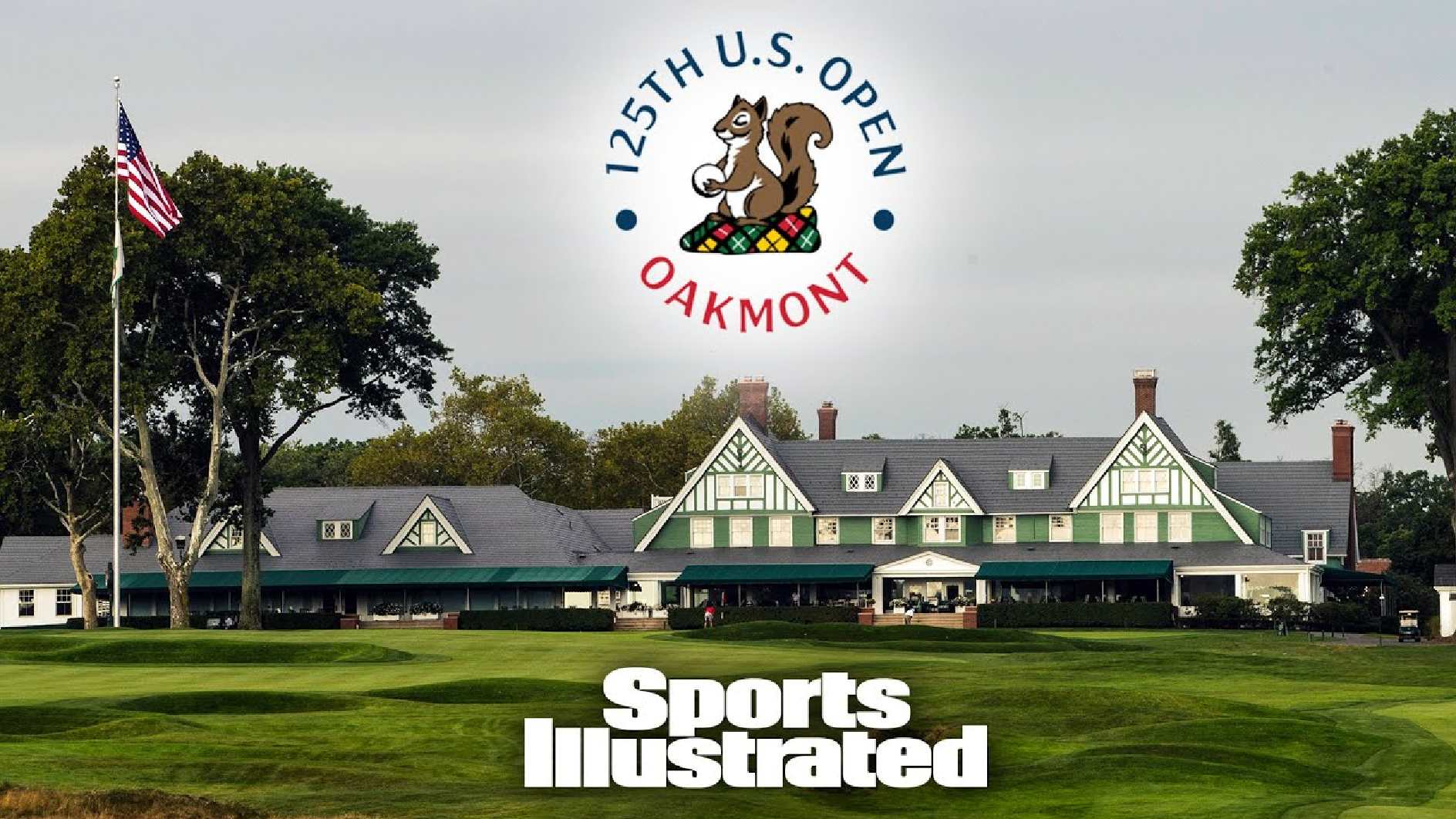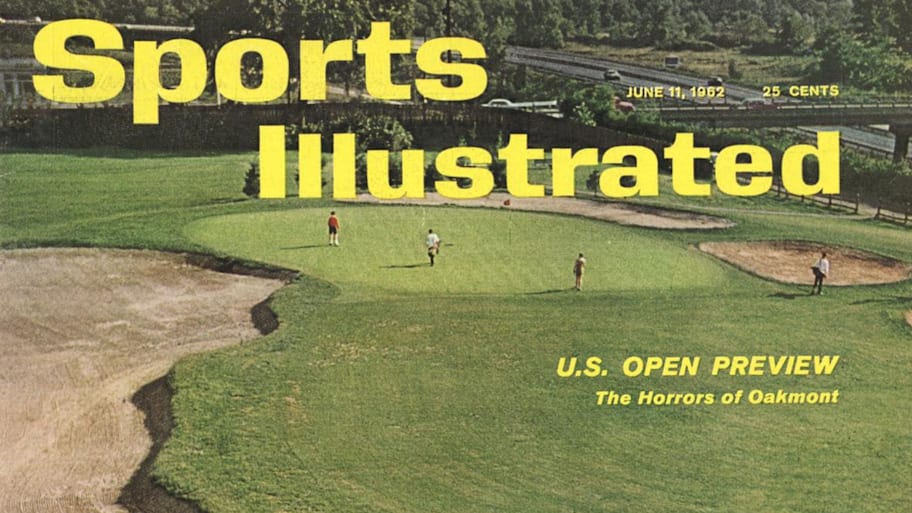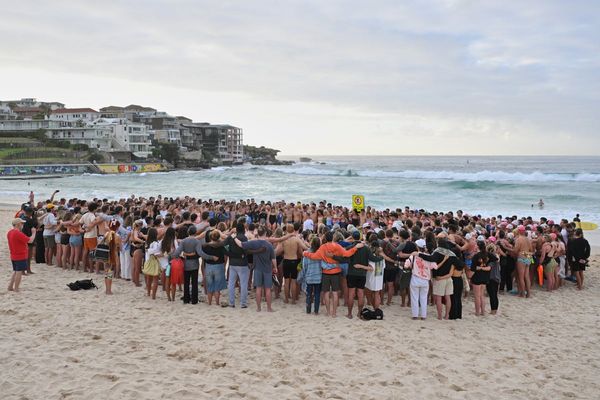

OAKMONT, Pa. — Shane Lowry arrived for a practice round the weekend before the 2016 U.S. Open at Oakmont and was unprepared for what he would encounter.
Sure, he was vaguely aware of the course’s difficult reputation, its penchant for fast greens and deep rough, and higher-than-usual scores by best golfers in the world.
But the venue had changed a great deal from the previous U.S. Open played here and the Irish golfer had little to go by. A year earlier, he played at the U.S. Open at Chambers Bay in Washington State, a course that could not be any more different than a typical U.S. Open venue.
He went out to play a practice round with his coach starting on the 10th tee at Oakmont.
“We got around to 14, which is up beside the clubhouse, and I walked in,” Lowry recalled. “I sat there in the locker room going, ‘I have no idea how I’m going to play golf around this place.’”
Lowry, who eventually tied for second at that U.S. Open, three shots behind winner Dustin Johnson, could speak for many. The venerable course that is bisected by the Pennsylvania Turnpike—after the 1st and 8th holes—will host the U.S. Open for a record 10th time this week.
And it is expected to be a beast.

“It’s still tough,” said Justin Thomas, who visited for a practice round two weeks ago. “I would say all of the rumors and everything are pretty on point.”
Well, they are not really rumors. The United States Golf Association, which sets up the course, has already outlined a setup that will see mostly 5-inch rough off the fairways, green speeds at more than 14.5 inches (think extremely fast) and the usual array of long, difficult holes.
First opened for play in 1904, Oakmont is an American gem, now hosting a men’s professional major for the 13th time, having also staged three PGA Championships.
According to the history of the club, when it first opened in the fall of that year, the course measured 6,406 yards and par was 80, with eight par-5s and a par-6. Tommy Armour won the first U.S. Open at Oakmont in 1927 in a playoff over “Lighthorse” Harry Cooper after both players tied at 301—13 over par.
When Sam Parks won the 1935 U.S. Open, he did so at 11 over par, with just three scores for the tournament under par. There were 252 rounds of 80 or higher.
Parks, in a 1994 interview when he was 85 years old and attending the U.S. Open at Oakmont as a guest, recalled how he practiced in the mornings before work at nearby course where he served as a club pro.
That U.S. Open would be his only victory of consequence (he played in the first Masters in 1934 and 16 editions in total) and he credited that win to course knowledge.
“The greens were as fast as they could make them,” Parks said, which still holds true today. “They not only cut them short but they rolled them, which was kind of a heresy at that time. They rolled them and made them hard. You couldn’t stop the ball. You landed it on the front and hoped it stopped by the back. Not only were they fast, but they were very true.
“Those greens required familiarity and they required a touch that most people didn’t find necessary before. The greens were not that fast anywhere else.”
Among the interesting aspects to Oakmont and perhaps the most unusual: it has no water hazards and virtually no trees. And it’s still among the most difficult layouts in the world.
Early-week rain could take some of the firmness out of the course but that could very well be offset by the brutal rough and the still lightning-fat greens when the 125th U.S. Open begins Thursday.

Oakmont this week could be tougher than ever
A media gathering in May was a preview of what is to come.
“There have been 1,385 people that have played a USGA Championship on this golf course, 27 of them have something in common,” said USGA CEO Mike Whan. “Over their four days they had a score that was lower than par. That’s 2 percent.”
The stories abound. Leading up to the 2007 tournament, defending champion Geoff Ogilvy had reportedly played a practice round and shot 85, losing six golf balls. “That’s an exaggeration,” he said. “I think I shot 83 and lost two, but it was hard.”
Adam Scott played with Ogilvy prior to that U.S. Open. “I played really great that day and Geoff didn’t,” Scott said. “So I was feeling really chipper about myself. And then I went to Memphis (for the PGA Tour event) and kind of messed up the back nine and finished second but got to Oakmont and thought I was in good shape.
“And I hit six greens in two days and flew back to Australia.
“If you’re not hitting it in the fairway, you’re not going to have a chance there. From how I’ve seen it in the past, it’s really one step at a time. You’ve got to get it in the fairway and then figure out how to get it into a hole somehow.
“You’ve really got to stripe it there. It’s really hard to recover on any hole. If you’re not in the fairway, you’re not advancing it far enough to feel good about getting it on the next couple of shots.”
On a recent visit Scott, who will make his 96th consecutive major start, said he hit every fairway on the front nine and still was 3 over par.
Masters champion Rory McIlroy visited last week prior to playing in the RBC Canadian Open and said that he hit three good shots at the par-4 2nd and still made a 7.
“We want to get every club in their bag dirty, all 15 of them 14 in their bag and the one between the ears,” said John Bodenhamer, the USGA’s chief championships officer.
The course’s hallmark has always been its difficulty. Members typically brag that the greens are faster during regular weeks than the U.S. Open. Most agree that not much has to happen for the USGA to get the course tournament-ready.

Oakmont under-par winners remain rare
In nine previous U.S. Opens at Oakmont, only a total of 23 players have finished the tournament under par—eight were in 1994. Three times, nobody was under par, including 2007, when Angel Cabrera won with a total of 285, 5 over. The last time the tournament was played at the Pennsylvania course, Dustin Johnson won at 276 by three shots over three players, and they were the only four players to finish under par.
Going way back, Armour’s victory at Oakmont in 1927 was the last time an Open winner shot more than 300. Since Parks’s 1935 victory at 299, just two U.S. Open winning scores have been at 290 or above. The last was Jack Nicklaus’s 1972 win at Pebble Beach, where he shot 290.
And the last time the Open was played at Oakmont prior to Johnny Miller’s 1973 triumph, only Nicklaus and Arnold Palmer finished under par in 1962 at 1 under. Nicklaus prevailed in a playoff—read the story “That Strong, Big Dude,” in the SI Vault— and that was Nicklaus’s first victory as a pro and the first of his 18 major titles.
Prior to that tournament, Sports Illustrated featured Oakmont on the cover to preview the event with the headline: “The Horrors of Oakmont.”

So, yeah. Oakmont can be brutal.
And yet it is where Miller shot a final-round 63, setting a U.S. Open scoring record in the process to win.
“Those greens are the toughest greens in the country,’’ said Miller, who was 26 at the time of his victory. “You just have to be a great ball striker. You have to put the ball underneath the hole. In that 63, I only had two balls above the hole in 18 greens hit. That was the secret to that round.”
Miller was not the only player to go low during that final day. Lanny Wadkins had a chance to match Miller with a birdie at the closing hole but made a bogey for 65. But there were just two other rounds in the 60s. (Par was 71 in 1973; it will be a par-70 this year.) For the week, there were just 24 scores in the 60s.
To look closely at the final round is to marvel at what Miller accomplished.
He birdied the first four holes, his only bogey coming at the 8th—where he three-putted. He then rebounded with a near-eagle and an easy birdie at the 9th, with more birdies at the 11th, 12th, 13th and 15th. His round ended with three pars, missing a 10-footer for birdie at the 17th, and lipping out at the 18th.
Miller missed just two fairways and hit all 18 greens in regulation.
The score led many to believe that the USGA was not going to see a course manhandled like that again. The following year’s conditions led to it being dubbed “The Massacre at Winged Foot” where Hale Irwin won at 7 over par.

The keys to success at Oakmont
Oakmont is also where Ben Hogan claimed his fourth and final U.S. Open as part of his Triple Crown major year in 1953. It’s where Larry Nelson held off Tom Watson from winning consecutive U.S. Opens in 1983, and where Ernie Els won the first of his four major titles in 1994.
That year, Els defeated Colin Montgomerie and Loren Roberts in an 18-hole playoff.
Angel Cabrera won the first of two majors by capturing an Oakmont U.S. Open, holding off Tiger Woods by a shot (Read about that one in our archives). His winning score was 285, 5 over par, and there were just eight sub-par scores for the week. And Johnson prevailed for his first major title nine years ago. That year, he led the field in driving distance, greens in regulation and scrambling.
That is a pretty potent combination.
But driving it in play is key, and it might be aided by a rainy early-week forecast. Oakmont has endured a wet spring (about 13 inches fell in the last two weeks), with more rain in the forecast leading up to the start of play on Thursday.
That, ultimately, might make it somewhat manageable. Lowry, who held a four-shot lead going into the final round before finishing tied for second, three back of Johnson, remembers the weather being a factor that year, too.
“It wasn't that I felt like I couldn't play it, but I was just like, This is too hard, I'm going in. You know what I mean?” Lowry said. “It was like it was one of those and, honestly, if it didn't rain—I remember it rained on Wednesday and Thursday that week. If it didn't rain that week, God knows what the winning score would have been.”
Expect similar sentiments this week.
This article was originally published on www.si.com as Return to the Brute: Oakmont’s Unique Brand of Carnage Ready for 2025 U.S. Open.







